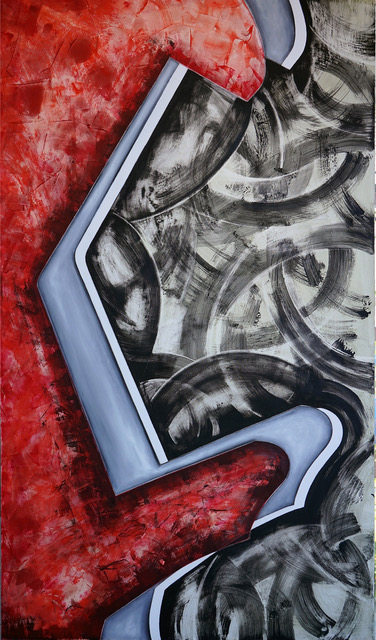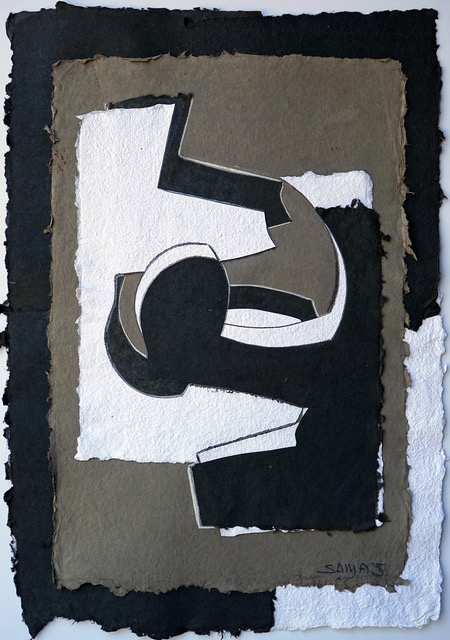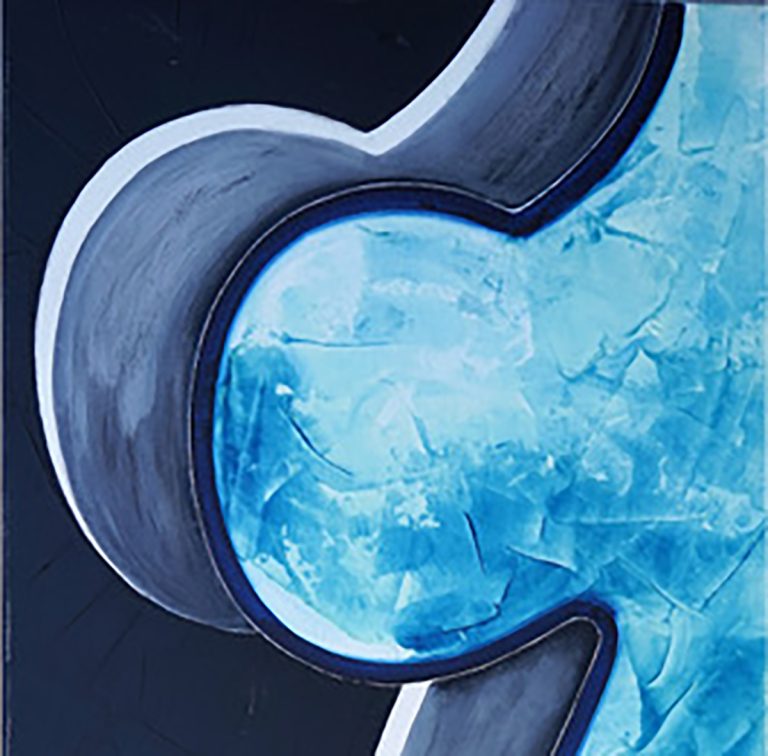Samaj X makes art that doesn’t try to impress—it just stays with you. His work isn’t showy or decorative. It’s rooted, reflective, and built from lived experience. His pieces feel like they come from somewhere older than the canvas—formed by memory, shaped by history, and guided by something internal. He works from intuition, not trends. There’s no rush to explain or decode. He trusts the process, lets the work reveal itself slowly. What you get is something layered—part personal, part universal. For Samaj X, making art is about going inward to bring something out. It’s not about image—it’s about presence. His forms are deliberate, his textures grounded. The meaning isn’t pushed—it emerges, piece by piece.
On the Work

Take Nubia X. The composition is tall and lean, almost like a totem. You’re met with an icy blue field, rough with texture, brushing up against dark, sculptural curves. There’s a feeling of movement, but also stillness—like two forces pressing against each other. It’s not a clash. It’s a conversation. The cool blue reads as ancient, glacial, maybe even cosmic. The curved shapes—steel gray and edged with white—hold it all in, shaping the flow. The title hints at African lineage, but the piece isn’t about geography. It’s more about spirit and presence. This is about tension held in harmony. It doesn’t shout, but it lingers.

Papa the Coptic has a different temperature. It’s loud without being noisy—bold red on the left, stormy black and white strokes on the right. This piece walks a fine line between sacred and raw. The forms cut into each other like shields or robes, possibly alluding to Coptic religious garments. But again, nothing is spelled out. The red feels less about violence and more about passion or offering. The background is smeared and swirled, almost smoky—suggesting spirit or memory. The whole painting feels like it’s holding a ritual, like something is being invoked. It’s less about likeness and more about presence. The shapes here are carriers of meaning, not illustrations of it.

Then there’s The Offering, which steps away from paint entirely. Handmade papers, torn and layered, create a surface that feels both ancient and tactile. Black, brown, and white forms are stacked and cut into each other, creating an image that feels part glyph, part memory. The textures are coarse, the paper uneven, which only adds to the grounded, artifact-like quality of the piece. This feels like a relic—not in a nostalgic way, but in a sacred one. The title invites you to see the piece as a gesture, a gift, or maybe even a surrender. The design is minimal, but the emotional weight is thick. It feels ceremonial.
Across all three works, a clear rhythm emerges. Samaj X returns to curved forms, layered shapes, and physical textures. There’s a steady dialogue between control and chaos, softness and structure. His visual language doesn’t fit neatly into a single category. You might see hints of architecture, street art, or even spiritual iconography—but none of it dominates. His work sits in its own space.
Samaj X doesn’t paint to explain. He paints to connect. The connection is quiet, not performative. It comes through in how the pieces are built—slow, thoughtful, and with a sense of purpose that feels internal. The result is work that doesn’t rely on narrative, yet says plenty. There’s something in the forms—some weight, some echo—that makes you pause. You might not know exactly what it is, but you’ll feel it just the same.

